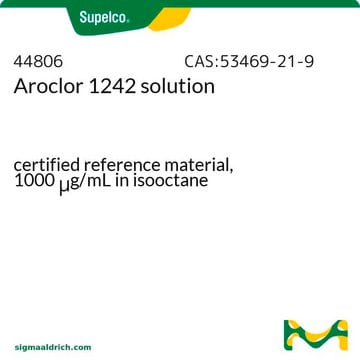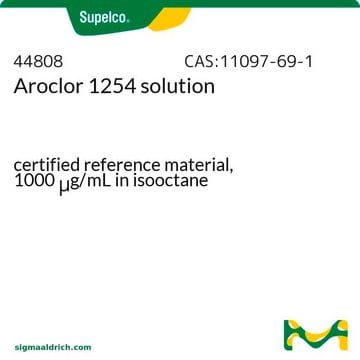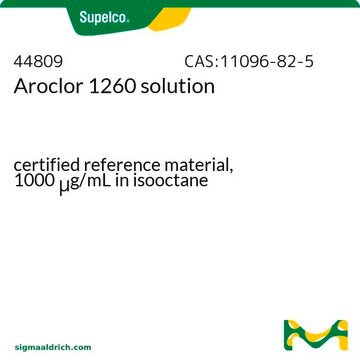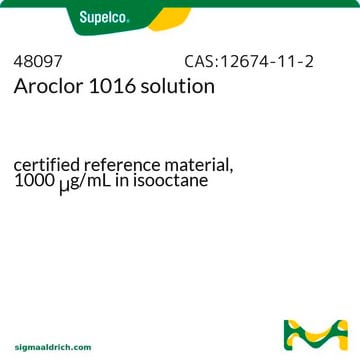44807
Aroclor 1248 solution
certified reference material, 1000 μg/mL in isooctane
About This Item
Produtos recomendados
grau
certified reference material
TraceCERT®
Agency
EPA 8082
linha de produto
TraceCERT®
Certificado de análise (CofA)
current certificate can be downloaded
Características
standard type calibration
embalagem
ampule of 1 mL
concentração
1000 μg/mL in isooctane
técnica(s)
HPLC: suitable
gas chromatography (GC): suitable
aplicação(ões)
environmental
Formato
single component solution
temperatura de armazenamento
2-30°C
cadeia de caracteres SMILES
Clc1cc(cc(c1)c2cc(cc(c2)Cl)Cl)Cl
InChI
1S/C12H6Cl4/c13-9-1-7(2-10(14)5-9)8-3-11(15)6-12(16)4-8/h1-6H
chave InChI
UTMWFJSRHLYRPY-UHFFFAOYSA-N
Procurando produtos similares? Visita Guia de comparação de produtos
Aplicação
Outras notas
Informações legais
Palavra indicadora
Danger
Frases de perigo
Declarações de precaução
Classificações de perigo
Aquatic Acute 1 - Aquatic Chronic 1 - Asp. Tox. 1 - Flam. Liq. 2 - Skin Irrit. 2 - STOT RE 2 - STOT SE 3
Órgãos-alvo
Central nervous system
Código de classe de armazenamento
3 - Flammable liquids
Classe de risco de água (WGK)
WGK 2
Ponto de fulgor (°F)
10.4 °F - closed cup
Ponto de fulgor (°C)
-12 °C - closed cup
Escolha uma das versões mais recentes:
Certificados de análise (COA)
It looks like we've run into a problem, but you can still download Certificates of Analysis from our Documentos section.
Se precisar de ajuda, entre em contato Atendimento ao cliente
Já possui este produto?
Encontre a documentação dos produtos que você adquiriu recentemente na biblioteca de documentos.
Active Filters
Nossa equipe de cientistas tem experiência em todas as áreas de pesquisa, incluindo Life Sciences, ciência de materiais, síntese química, cromatografia, química analítica e muitas outras.
Entre em contato com a assistência técnica











